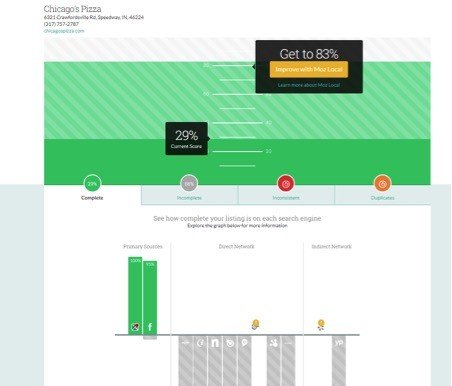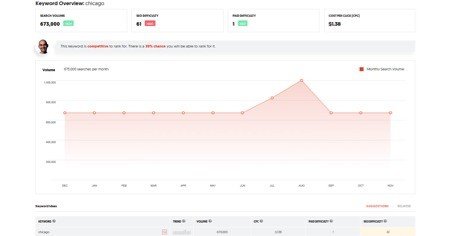Path Digital › News & Blog › 4 local SEO tips for your business
4 local SEO tips for your business
by Kayleigh Alexandra on December 23, 2018
/ 0 comments leave a reply
(Lead photo credit: Flickr.) From using NAP consistently to creating regional resources, there’s plenty you can do to win at local SEO and improve your Google rankings. Use these four tips to increase the number of visitors to your website and broaden your customer base.
1. Love mobile searchers with Google My Business
Local SEO is all about mobile. Think about the times when you’ve been out and wanted to get some food: you probably searched “restaurant near me” on your smartphone to find the top spot. When you ask Google to recommend you a restaurant nearby it uses local SEO to give you the best possible local answer.
By adding your business details to Google My Business (and keeping them updated) you can tell Google you’re the nearest result, making your business the answer to mobile search requests. Remember to keep your listing updated with seasonal opening times, attractive imagery, updated phone number etc. There is nothing more annoying than inaccurate Maps listings.
Setting up Google My Business also gives you valuable data about your customers. You can establish how your customers found your business, along with seeing how many times people have searched for your company.
To set up your Google My Business account in the best way, watch the expert video below:
2. Keep your NAP up to date and consistent
A Google My Business account isn’t enough. Google wants to see consistency from your business and this means having the same Name, Address, Phone Number (NAP) everywhere. It’s a simple, yet important, local SEO tactic that’s easy to get right with a little time and effort.
There are many places where your NAP is published:

- Your company website
- Social media accounts
- Local directories
- Yelp and other review aggregators.
Basically anywhere your business address can be listed.
This data should always be consistent. This means you need to include the same information in the same format wherever possible. Best practice is to use your full company name, address, and telephone number every single time.
You can use the MozLocal tool (among other local SEO tools) to see how consistent your NAP is. Punch your business name into the search bar and it gives you a score. Using Chicago’s as an example, I’ve created a sample of what you get from MozLocal to the right.
Try it out on your business and see what your score is!
More recommended reading:
Check out The Power of Rel=”Canonical” for Migration SEO if you’re moving to a new platform (keep URL strings as similar as possible!) or to HTTPS.
3. Blog about issues relevant to your area
Blogging is great for SEO. Adding regular long-form content to your website lets Google know you’re there.
It also builds an association between your business and the topics you write about. By blogging about issues relevant to your area, you’re telling Google where you’re located and helping reinforce your global footprint.
Here’s how you can create local content for local searchers:
- Optimize your local keywords: Start with your town/city and build out to your state. Using locally relevant keywords lets Google connect your business with your locality.
- Use your long-tail keywords: Long-tail keywords are phrases that are three words or longer. They’re great for local SEO because they are more specific and niche focused.
- Write about local topics: Find out what topics are hot in your area and write about them. Ubersuggest is an excellent free tool which is perfect to find out what people are talking about in your area. Have a look at the screenshot below to see it in action:

4. Create local resources to get links to your business
Blogging about topics relevant to your area are a great start, but you can’t stop there. Your savvy competitors will be doing this already. So you need to stand out to optimize your business for local search. You can do this by creating a local resource.
The benefit of creating a resource is that it gives you something unique and linkable. Links are one of the biggest influences on ranking, and that includes local SEO. By getting links you build up the authority of your business and improve your local SEO ranking.
So what can you create? You have many options:
- Infographics: These resources are the simplest way of turning an information dump into a vital data tool. Most people absorb images easier than content. This makes your infographic perfect as a quick and snappy educational tool. Canva is my favorite way to create a free infographic. It’s simple to use and looks classy.
- eBook: For more in-depth teaching material, you can’t beat an eBook. It’s a way of drawing together your expert advice in a linkable format, one that helps to make your business a subject authority.
- Video: Google isn’t the only search engine you must satisfy to aid your local SEO. YouTube is second only to Google and has over 1 billion views a day. Creating a YouTube video gives you a resource that’s easy to track, as you use Google Analytics to can review how often your video is watched. Watch the clip underneath for top tips on how to track your YouTube videos:
Make these four tips part of your local SEO strategy and you’ll increase traffic to your website, catch niche customers, and get more from mobile searchers. And why is that important? It’ll make your business more money.

Kayleigh Alexandra writes all about fresh events and innovations in the world of business for Micro Startups — a site dedicated helping ambitious people everywhere realize their business dreams. Stop by the blog to catch up on the latest entrepreneurial insights, and visit us on Twitter @getmicrostarted.
Leave a Reply